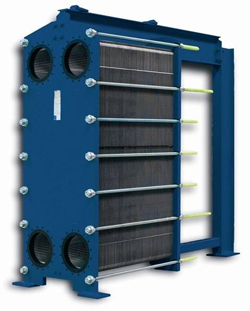 York-based GEA PHE North America anticipates growth in 2009 on the order of 60 new jobs, mainly on the plant floor, according to Jon Paulus, business development manager for gasket and heat plate exchangers.
York-based GEA PHE North America anticipates growth in 2009 on the order of 60 new jobs, mainly on the plant floor, according to Jon Paulus, business development manager for gasket and heat plate exchangers.
The company designs and manufactures brazed-plate heat exchangers, devices that create sudden and precise heating and cooling of flowing fluids in many production processes–from milk pasteurization to chemical processing to power generation to marine engine cooling systems–an effect achieved when a hot liquid flows alongside without mixing into one that is cold.
That method of thermal exchange has been known from ancient times. Yet the company, known as Flat Plate in its home town, creates devices that do it with extraordinary precision for customers throughout North America and Europe–on the leading edge of a technology curve that forecasts continued growth in market share. Its products essentially use precisely designed stacks of metal plates to separate large volumes of hot and cold flowing fluids at many stages in manufacturing.
A standalone company in the fluid products division of the publicly traded German firm GEA, which acquired Flat Plate and two other related American firms three years ago and consolidated all operations in a new, modern plant in York, GEA PHE North America has both a strong global network and a market-leading technology to support its forecast.
“Basically anybody can make a plate heat exchanger if they have enough money to pay a couple hundred grand for a pressing tool,” Paulus says. “The real mojo is in making the corrugation on the plates at just the right depth and just the right pattern and just the right angles to produce the turbulences that distribute the fluid efficiently over the entire width of a plate. That’s really where the magic happens.”
It’s also the heart of a more efficient, smaller, and less expensive technology that is driving the company’s growth as it gains market share by replacing an older, larger, and more costly shell-and-tube heat exchangers still in widespread use.
Source: GEA PHE North America, Jon Paulus
Writer: Joseph Plummer
To receive Keystone Edge free every week, click here.